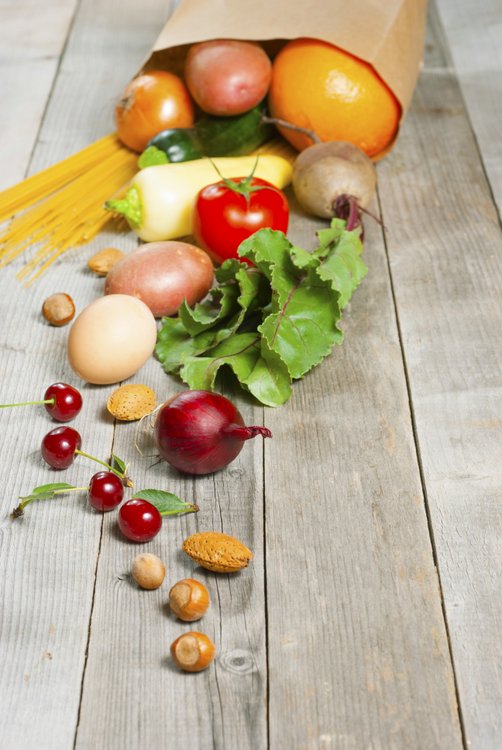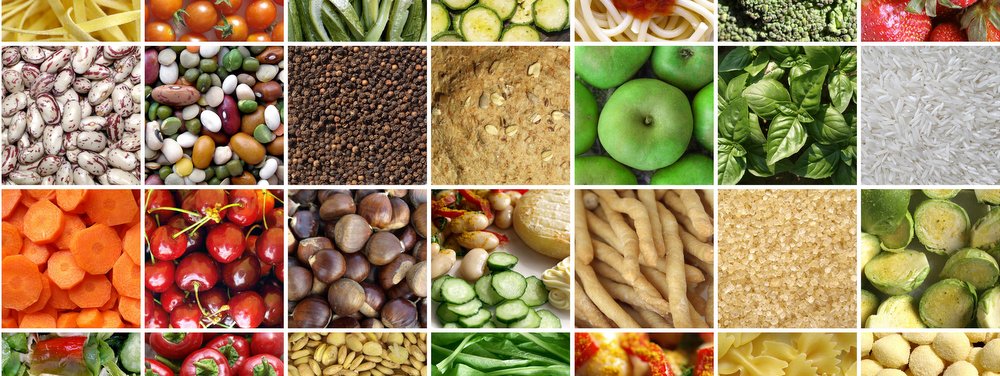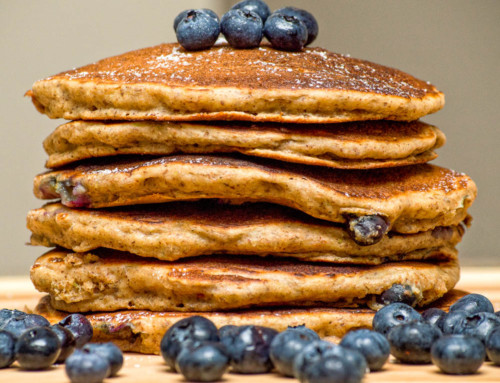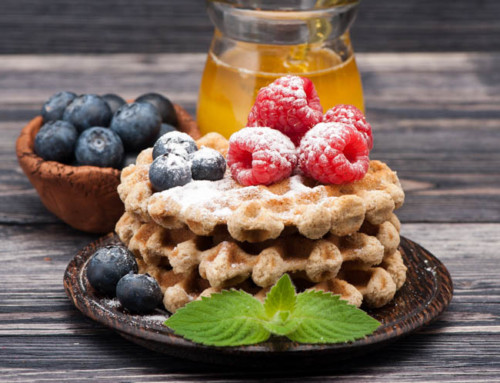Fiber is a major component of many fruits, vegetables, legumes, whole grains, nuts and seeds—most plant-based foods. Due to its numerous benefits, fiber is also added to most processed and packaged foods. Popularity of low-carb and other restrictive style diets such as Atkins, Paleo and Gluten-free often gloss over this important macronutrient.
Related article: Importance of Carbohydrates for Stronger, Leaner, Faster Self
Fiber Basics
Fiber is a complex carbohydrate that makes up the indigestible portion of food derived from plants. Gastric juices in the stomach, and enzymes that normally aid in digestion of food are unable to break down fiber. Therefore, it is passed on to the large intestine for fermentation or elimination as waste.
Fiber comes in many forms, each having a unique chemical structure and physical property.
There are two fiber classifications:
Soluble Fiber
- dissolves in water forming viscous gels travelling through the stomach and small intestine. No fiber is digested by the small intestine. Inside large intestine, it is fermented by bacteria into an alcohol or an acid. Bacteria utilize parts of this fermented product for energy — carbon (organic molecule of life) is utilized for synthesis and growth of bacteria flora.
- Byproducts of fermentation and hydrolysis (bond breaking) produce short chain fatty acids which have numerous health benefits and are absorbed in the large intestine. The unused portion of fiber is passed on as stool or gases.
Insoluble Fiber
- This type of fiber cannot be fermented and is passed through the body as stool. It assists in the passage of waste by binding water and changing overall consistency. Insoluble fiber has been linked to greater overall health of large intestine.
Average recommendation for fiber intake is 25g/day for women and 38g/day for men. Ideally these daily amounts should primarily come from natural foods, followed by the products with supplemented fiber.
Importance of Fiber for metabolic and cardiovascular health
Metabolism is more than just calories in / calories out; it encompasses all of the biochemical and physiological reactions that take place within the body. Simply put, desired metabolic health is the body working at its optimum regenerating, repairing and building cellular components like cells, hormones, enzymes and DNA amongst many others.
Cardiovascular system includes organs that allow blood to circulate and carry needed nutrients (amino acids), oxygen, fuel (glucose and triglycerides) and hormones across the body—heart, blood, and blood vessels make up this system. With poor diet and lack of physical activity the body begins to store fat deposits within blood vessels, thus reducing effectiveness of the system and cardiovascular health.
Fiber improves the above systems by:
- Gut Flora increase – by fermenting inside large intestine, fiber provides food for good bacteria to grow via, resulting in production of Short-chain fatty acids (SCFA), that have been linked to improved cardiovascular health. Gut bacteria has numerous benefits including improved immunity, production of vitamins B and K; as well as breakdown of bile acids, steroids and xenobiotics (antibiotics and alike). Fiber also possesses some of disease preventative benefits including reduce risk of certain cancers, type 2 diabetes and heart disease, however these topics are beyond the scope of this article.
- Stool passage – fiber traps water and aids in passage of waste, preventing constipation amongst other digestive health benefits.
- Satiety – fiber slows down digestion (food stays longer in the stomach). Furthermore, it can trap water, increasing bulk or amount of material in the GI track — improving viscosity of a meal. Soluble fiber fermented in the large intestine releases satiety hormones like GLP-1 (Glucagon-like peptide 1) and PYY (Peptide tyrosine tyrosine).
- Decreases metabolized energy – unusable foods (calories) are lost through stool, urine and combustible gases. As a product, fiber limits caloric absorption by diluting the diet’s energy (sugars and fats) availability, while maintaining other important nutrients.
- Glycemic control – fiber is indigestible, staying longer in the stomach which slows down the absorption of other carbohydrates. It changes the glycemic index of foods in a positive way by delaying release of glucose into the blood stream and therefore decreasing the insulin spike.
- Cholesterol lowering benefits – changes physical characteristics of consumed foods through steadier delivery of nutrients such as glucose and some lipid molecules in the plasma following a meal.
Add more Fiber to your Daily Meals
Best Fiber Sources
Best ways to increase your fiber intake are:
- Eat whole fruits and vegetables with flesh and skin – no juicing, the fiber is in the pulp. In addition to fiber, fruits and vegetables contain valuable phytochemicals to fight disease.
- Lentils and beans – most of the carb calories within are fibrous, and are passed on to be fermented or eliminated as waste.
- Whole Grains – minimally processed grains – whole wheat flour, whole wheat rice and oats. In addition to fiber, whole grains contain phenolics and carotenoids that carry a number of health benefits.
- Seeds and nuts – flaxseed and walnuts are a good source of fiber and essential fatty acids. Nuts and seeds pack large number of calories and need to be eaten in moderation.
- Take fiber supplements with food to maximize the benefits.
Hidden Pitfalls
The biggest pitfall to watch out for is looking for fiber in your treat foods like box of crackers, white bread and similar style products. Often the fiber benefits from such foods are outweighed by the excess sugar and poor-nutrients content.
Related article: Top Health Tips — Treats Vs. Fuels
Quick and Easy Strategies to increase fiber intake
Breakfast – High fiber steel cut oats, toped with fruit and nuts – Breakfast Porridge.
Morning Snack – Protein and Fiber rich smoothie alternative to the usual donut and coffee pick-me-up.
Lunch – Start with a chopped veggie salad or, add some carrots and celery as a side to your sandwich. Try to maximize on fiber rich vegetables like bell peppers, carrots, radishes, broccoli; over lettuce.
Afternoon Snack – Fruit and Vegetable smoothie – blend a few green vegetables (spinach, kale, broccoli) together and add some fruit (pineapple, banana) to mask some of the vegetable taste.
Dinner – include more beans and lentils as a high fiber and protein alternative to meat
Related Recipes:
Final Thoughts
Fiber is an important product that positively affects numerous body systems and processes. Don’t feel the pressure to overhaul your diet, but rather make slow and steady substitutions with fiber-rich foods to experience health benefits discussed in this article. Big nutritional changes present greater barriers for the body to adapt to. Start slow by adding the fiber rich smoothie to your diet at first and work on from there, towards healthy, high fiber sustainable lifestyle.
In the end, many of us know we need to eat more whole grains, fruits and vegetables but struggle to find an easy way to do so. Our The No-Diet Book provides a step-by-step guide towards cleansing the palate from accustomed sweet, salt and fatty take-out flavours. The No-Diet book also contains a number of high fiber recipes and a 7-day meal plan designed for a high fiber and protein rich diet that will keep you full longer while improving metabolic and cardiovascular health.
Leave us a comment as to your favourite tip to increase daily fiber intake! If you found this post helpful, feel free to share with others 🙂






